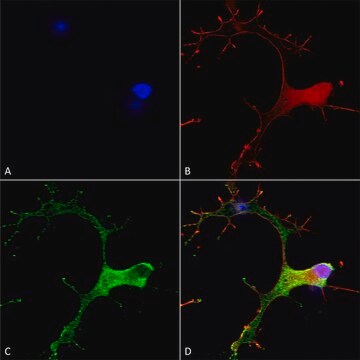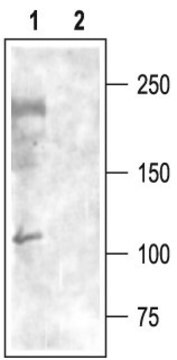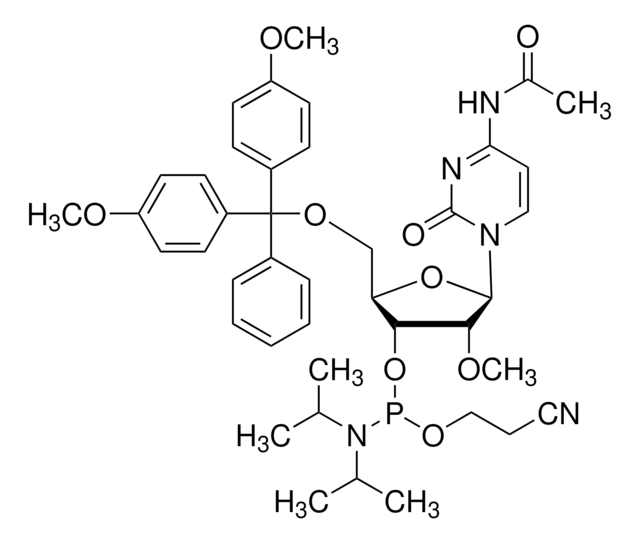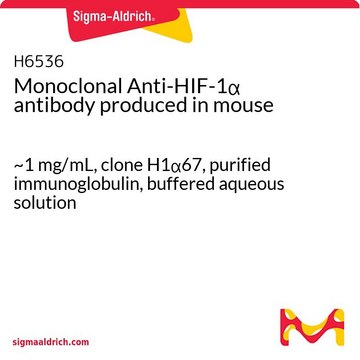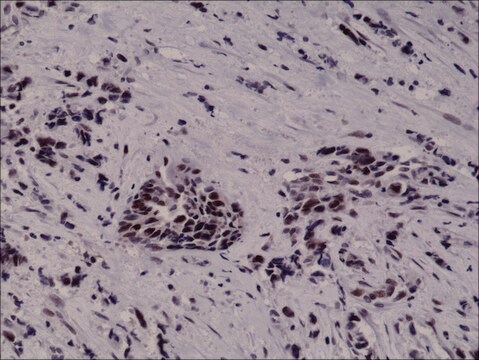C2240
Anti-Calcium Channel CaV3.1 (α1G) antibody produced in rabbit
affinity isolated antibody, lyophilized powder
Faça loginpara ver os preços organizacionais e de contrato
About This Item
Produtos recomendados
fonte biológica
rabbit
Nível de qualidade
conjugado
unconjugated
forma do anticorpo
affinity isolated antibody
tipo de produto de anticorpo
primary antibodies
clone
polyclonal
Formulário
lyophilized powder
reatividade de espécies
rat
técnica(s)
western blot: 1:200 using rat brain membranes
nº de adesão UniProt
temperatura de armazenamento
−20°C
modificação pós-traducional do alvo
unmodified
Informações sobre genes
human ... CACNA1G(8913)
rat ... Cacna1g(29717)
Descrição geral
Calcium channel, voltage-dependent, T type, α 1G subunit is a protein encoded by CACNA1G gene in humans. It belongs to a family of voltage-gated calcium channels and serves as the key transducer of cell surface membrane potential changes into local intracellular calcium transients that initiate many different physiological events.
Imunogênio
peptide corresponding to amino acid residues 1-22 of rat CaV3.1. This epitope is highly homologous in human (20/22 residues identical).
Aplicação
Anti-Calcium Channel CaV3.1 (α1G) antibody produced in rabbit is suitable for western blotting at a dilution of 1:200 using rat brain membranes.
Ações bioquímicas/fisiológicas
CACNA1G (T-type channels) are involved in pacemaker activity, low-threshold calcium spikes, neuronal oscillations and resonance and rebound burst firing. It exhibits a significant window current that helps for Fe2+ pathway entry into cells with relevant concentrations of extracellular Fe2+. The window current also creates a pathway for Cd2+ entry into cells during Cd2+ exposure. CACNA1G were found to be associated with Autism Spectrum Disorder.
forma física
Lyophilized from phosphate buffered saline, pH 7.4, containing 1% bovine serum albumin, and 0.05% sodium azide.
Exoneração de responsabilidade
Unless otherwise stated in our catalog or other company documentation accompanying the product(s), our products are intended for research use only and are not to be used for any other purpose, which includes but is not limited to, unauthorized commercial uses, in vitro diagnostic uses, ex vivo or in vivo therapeutic uses or any type of consumption or application to humans or animals.
Não está encontrando o produto certo?
Experimente o nosso Ferramenta de seleção de produtos.
Código de classe de armazenamento
11 - Combustible Solids
Classe de risco de água (WGK)
WGK 3
Ponto de fulgor (°F)
Not applicable
Ponto de fulgor (°C)
Not applicable
Equipamento de proteção individual
Eyeshields, Gloves, type N95 (US)
Escolha uma das versões mais recentes:
Já possui este produto?
Encontre a documentação dos produtos que você adquiriu recentemente na biblioteca de documentos.
E Perez-Reyes et al.
Nature, 391(6670), 896-900 (1998-03-12)
The molecular diversity of voltage-activated calcium channels was established by studies showing that channels could be distinguished by their voltage-dependence, deactivation and single-channel conductance. Low-voltage-activated channels are called 'T' type because their currents are both transient (owing to fast inactivation)
S P Strom et al.
Molecular psychiatry, 15(10), 996-1005 (2009-05-21)
Chromosome 17q11-q21 is a region of the genome likely to harbor susceptibility to autism (MIM(209850)) based on earlier evidence of linkage to the disorder. This linkage is specific to multiplex pedigrees containing only male probands (MO) within the Autism Genetic
Kyle V Lopin et al.
Molecular pharmacology, 82(6), 1194-1204 (2012-09-14)
Iron is a biologically essential metal, but excess iron can cause damage to the cardiovascular and nervous systems. We examined the effects of extracellular Fe²⁺ on permeation and gating of Ca(V)3.1 channels stably transfected in HEK293 cells, by using whole-cell
William A Catterall et al.
Pharmacological reviews, 57(4), 411-425 (2005-12-31)
The family of voltage-gated calcium channels serves as the key transducers of cell surface membrane potential changes into local intracellular calcium transients that initiate many different physiological events. There are 10 members of the voltage-gated calcium channel family that have
Kyle V Lopin et al.
Molecular pharmacology, 82(6), 1183-1193 (2012-09-14)
Cd²⁺ is an industrial pollutant that can cause cytotoxicity in multiple organs. We examined the effects of extracellular Cd²⁺ on permeation and gating of Ca(v)3.1 (α1G) channels stably transfected in HEK293 cells, by using whole-cell recording. With the use of
Nossa equipe de cientistas tem experiência em todas as áreas de pesquisa, incluindo Life Sciences, ciência de materiais, síntese química, cromatografia, química analítica e muitas outras.
Entre em contato com a assistência técnica